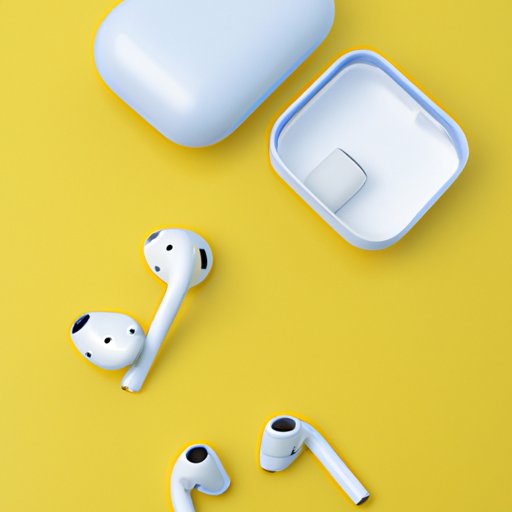I. Introduction
Apple’s AirPods are popular wireless earbuds that offer a seamless user experience, but pairing them can sometimes be frustrating. It’s not uncommon to face connection issues or struggle with customizing the settings. This guide will provide you with a step-by-step tutorial on how to pair your AirPods with your iPhone or Mac, troubleshoot common issues, customize the settings, and maintain your AirPods for long-lasting optimal use.
II. Pairing AirPods with an iPhone
Pairing your AirPods with your iPhone is a straightforward process that requires a few simple steps.
- Put AirPods in pairing mode: Open the lid of your AirPods case and place them near your iPhone. Hold the button on the back of the case until the LED light flashes white.
- Select AirPods from the Bluetooth menu: On your iPhone, go to Settings > Bluetooth and select your AirPods from the list of available devices.
- Check connection status: Once paired, your AirPods will appear under My Devices. You can also check the battery status of each earbud and the charging case.
If you encounter any issues with pairing your AirPods with your iPhone, try resetting your AirPods or your iPhone’s network settings. You should also make sure your AirPods and iPhone are updated to the latest versions of their respective software.
III. Pairing AirPods with a Mac
Pairing your AirPods with your Mac is just as easy as pairing them with your iPhone.
- Enable Bluetooth on your Mac: Click on the Apple menu, select System Preferences, and click on Bluetooth. Make sure Bluetooth is turned on.
- Add AirPods to list of Bluetooth devices: Put your AirPods in pairing mode by opening the lid of the case and holding down the button on the back until the LED light flashes white. On your Mac, select your AirPods from the list of available Bluetooth devices.
- Use AirPods with different Mac settings: Change the audio and microphone settings for your AirPods by clicking on the Volume icon in the menu bar and selecting your AirPods as the audio input and output device.
If you’re having issues with pairing your AirPods with your Mac, try resetting your AirPods or your Mac’s Bluetooth module. You can also check for any software updates for your AirPods and your Mac.
IV. Solving problems with connecting AirPods
Common issues with AirPod connection include your AirPods not appearing in the Bluetooth device list, not connecting to your device, or not playing any sound.
If your AirPods aren’t appearing in the Bluetooth device list, make sure they’re in pairing mode and close to your device. Resetting your AirPods or device can also help. If your AirPods won’t connect to your device, try resetting either your AirPods or device, and then re-pair your AirPods. If your AirPods aren’t playing any sound, make sure the volume is turned up, and try adjusting the audio settings for your device.
V. Customizing AirPods settings
There are several customizable settings for your AirPods that can enhance your user experience.
- Enabling Automatic Ear Detection: This feature lets your AirPods detect when you have them in your ears and automatically pause music playback when you remove them.
- Changing double-tap function: You can change the function of the double-tap gesture on your AirPods to play/pause music, skip to the next track, or activate Siri.
- Enabling Siri access with AirPods: You can use Siri with your AirPods without needing to take out your device by saying “Hey Siri.”
To customize your AirPods settings, go to Settings > Bluetooth on your device and select your AirPods. You can then adjust the settings for your AirPods.
VI. Tips for maintaining AirPods
To prolong the lifespan and maintain the quality of your AirPods, there are a few tips you should follow:
- Cleaning them regularly: Clean your AirPods with a soft, dry cloth, and use a gentle, alcohol-free solution on the tips if necessary.
- Keeping them safe when not in use: Store your AirPods in their case, and avoid exposing them to water, extreme temperatures, or physical damage.
- Checking the battery status: Make sure you charge your AirPods regularly and check the battery status. You can also get notifications when your battery is low.
VII. Conclusion
Pairing and customizing your AirPods can make your listening experience much better, but it can be challenging to set up and troubleshoot issues. With this comprehensive guide, you now have a step-by-step tutorial on how to pair your AirPods with your iPhone or Mac, troubleshoot common issues, customize the settings, and maintain your AirPods for long-lasting optimal use.
By following these tips, you can avoid unnecessary frustration and enjoy your AirPods to their fullest potential.
